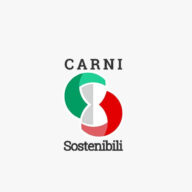
Microbiological and chemical contaminants
A feasible threat to consumer safety regards the possible contamination with microorganisms or chemical substances, which may come into contact with food (or with the raw materials such as animal feed) in many stages of the processes.
In truth, these types of contamination are not specific to meat, but all fresh food. For this reason it is essential to have a good management of all distribution phases that occur from the exit of manufacturing sites onwards, including domestic conservation. One risky situation is the poor upkeep of household refrigerators which, if not perfectly clean and not kept at appropriate temperatures, can be a source of contamination.
Microbiological contamination
Microbiological contamination is by far the most frequent cause of food alert. In this category belong contaminations by bacteria (such as salmonella), parasites (Trichinella), viruses and fungi. European legislation has intervened to safeguard consumer safety with Regulation (EC) No. 2073/2005, which establishes the microbiological criteria applicable to many foods, including all types of meat.
It is the basis of the microbiological tests conducted by both official controls and by self-control: in fact, it not only obliges food operators to ensure that food complies with the safety and processing hygiene criteria, but also establishes that the authorities will monitor compliance, also through sampling and food analysis in the context of the supervision activities. The goal of self-control of quality management systems and systems developed by the agribusiness companies is that of minimising the risk of microbiological contamination through widespread control of the processes and, in particular, of preservative systems.
Among the microbiological risks are also mycotoxins, toxins produced by certain fungi or moulds in plant foods such as peanuts, walnuts or hazelnuts, corn, grain or soybeans that can enter the food chain through meat or other animal products such as eggs , milk and cheese from cattle that have consumed contaminated feed.
In addition to the controls implemented throughout the supply chain, consumer behaviour plays a key role: the best domestic conservation practices and proper cooking of food are fundamental to reduce risks.
Chemical contamination
The chemical contaminants include chemicals in the environment (such as pesticides), heavy metals, and other debris that may accidentally enter the food chain during the food production process.
Chemicals such as pesticides or medicines used for Animal Health are subject to strict regulations, and must pass strict toxicity tests for humans and the environment, before being admitted to registration with the European or National Authorities.
Also for industrial substances, such as dioxins and heavy metals, there are strict controls, designed to avoid contamination of the environment and to ensure the protection of public health.
The Sustainable Meat Project


